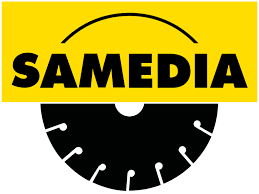Saw Blade 101: Everything You Need to Know

1. Blade Anatomy
Selecting the right saw blade for the right job is pretty simple when you know what all the information means on the package. This is a list of the most common terminology and a brief on what it means performance wise.
Tooth Count (TPI – Teeth Per Inch)
This measures the number of teeth on the blade per inch. It will determine the smoothness of the cut and how aggressive the cut is.
- More teeth will produce smoother, finer cuts.
Ideal for: finish work, laminate, trim, and cabinetry.


- Fewer teeth will remove material faster but leave a rougher cut.
Ideal for: framing, rough carpentry, and ripping lumber.
Hook Angle (Face Angle)
Hook angle is the angle the blade teeth are tilted forward or backward from the center of the blade.
- Positive hook angle (10°–20°) pulls the material into the blade, increasing the feed rate.
Common on ripping blades where speed and power are priorities. - Neutral or slight negative hook angle (0° to –5°) provides better control and reduces tear-out.
Preferred for cross-cutting, laminate work, or situations where precision is more important than speed.
Rake Angle (Top Bevel Angle)
This refers to the side-to-side angle of the tooth’s top edge, influencing how aggressively the blade cuts through the material.
- Aggressive rake angle (20° or more) provides fast, rough cuts.
Best for demolition or fast-paced cutting tasks. - Shallow rake angle (5°–15°) strikes a balance between cut quality and speed.
Suitable for general woodworking where a cleaner finish is desired.
Kerf Width
Kerf is the width of the cut made by the blade.
- Full-kerf blades (approximately 3.0 mm) offer more stability and less vibration, but require more power from the saw motor.
These are common in professional-grade table saws and contractor tools. - Thin-kerf blades (around 2.0 mm) are easier to push through material, require less power, and create less waste.
Ideal for portable or homeowner-grade saws.
1.1 Tooth Count (TPI)
- 24–30 TPI (Coarse):
- Use: Rip cuts in dimensional lumber (2×4, 2×6) where speed matters over finish.
- Example: On my framing crew, we’d swap in a 24-tooth FTG blade to knock out rough studs in minutes.
- 40–60 TPI (Medium):
- Use: Combination blades—serve both rip and cross-cut tasks reasonably well.
- Tip: Look for an ATB/FTG tooth pattern in this range for smoother edges without sacrificing too much speed.
- 80–120 TPI (Fine):
- Use: Laminates, veneered plywood, plus non-ferrous metals (aluminum, brass).
- Caution: High TPI blades generate heat; feed rate must be slow to avoid burning or blade glazing.
1.2 Hook Angle (Face Angle)
- Positive Hook (+5° to +20°):
- Effect: Aggressively “pulls” your workpiece forward—great for table saw rips and sliding-miters.
- Watch-out: On handheld saws, too much positive hook can kick back violently.
- Neutral (0°):
- Effect: Balanced feed with minimal tear-out, common in quality combination blades.
- Negative Hook (–5° to –10°):
- Effect: “Pushes” material away from blade, reducing splintering on cross-cuts—favored for cutting delicate plywood or laminates in a sliding compound miter.
1.3 Rake Angle (Top Bevel)
- Steep Rake (>20°):
- Effect: Fast stock removal; rougher surface finish. Ideal for demolition or pallet-breaking.
- Moderate Rake (10°–15°):
- Effect: Good balance—used on many ripping and combination blades.
- Shallow Rake (5°–10°):
- Effect: Slicing action—yields very clean, tear-out-free cuts; standard on finish blades.
1.4 Kerf Width
- Full-Kerf (3.0–3.2 mm):
- Benefit: Maximum stability; less blade wander at high RPM.
- Requirement: High-torque motors (table saws, radial arms).
- Thin-Kerf (1.8–2.2 mm):
- Benefit: Less material waste; cuts faster on lower-power saws (jobsite circular saws, tracksaws).
- Trade-off: Slightly more vibration; can produce rougher edges on deep cross-cuts.
2. Blade Types & Materials
Material science dictates how long your blade stays sharp and what it can cut.
2.1 Steel & High-Speed Steel (HSS)
- Composition: Molten tool-grade steel.
- Strengths: Low cost; decent edge for very light-duty tasks.
- Weaknesses: Edges dull quickly; won’t tolerate heat or abrasive materials.
2.2 Carbide-Tipped Teeth
- Composition: Tungsten-carbide particles bonded to a steel body.
- Durability: 20–30× sharpening life of steel.
- Coatings:
- TiN (Titanium Nitride): Reduces friction; extends life ~10%.
- TiAlN (Titanium Aluminum Nitride): Better heat resistance; ideal for high-speed machinery.
- Use Cases: Virtually all professional carpentry, cabinetry, and industrial woodworking.
2.3 Specialty Blades
- Plywood & Laminate:
- Teeth: 80–120 ATB with negative hook, ultra-thin gullets.
- Goal: Zero chip-out on delicate veneers.
- Non-Ferrous Metals:
- Teeth: 100–120 TPI, triple-chip grind, special carbide to resist galling.
- Tip: Run blade at slower RPM (3,000–4,000 RPM) and use cutting fluid.
- Masonry & Tile:
- Construction: Diamond-impregnated edge or segmented rim—no “teeth” per se.
- Application: Wet cutting preferred to minimize dust and extend diamond life.
3. Choosing the Right Blade
A systematic approach prevents endless blade swapping:
- Identify Material: Softwood, hardwood, plywood, metal, or abrasive.
- Determine Cut Type: Rip, cross-cut, or combination.
- Select Tooth Count & Grind: Use the table below as your starting point.
| Task | Material | Grind & Teeth | Hook/Rake | Kerf |
| Heavy Rip | Pine, fir, spruce | FTG / 24–30 | +15° | Thin/full |
| Smooth Cross-Cut | Oak, maple, plywood | ATB / 60–80 | 0° to –5° | Full |
| All-Purpose | Mixed framing & finish | Combination / 40 | +5° | Full |
| Finish Work | MDF, laminate | ATB / 80–100 | –5° to –10° | Thin |
| Aluminum & Brass | Non-ferrous metals | Triple-chip / 100 | 0° | Thin |
Pro Tip: For a one-blade-does-all approach, lean toward a high-quality 40-tooth combo blade with ATB teeth and a neutral hook. It won’t excel in any one area but will give you reliable performance across dozens of materials.
Beginner’s Corner: Choosing Your First Saw Blade
When you’re just starting out on home projects—think cutting trim, building simple shelves, or occasional plywood work—you don’t need a full pro shop’s worth of blades. A single, versatile combination blade and a thin-kerf rip blade will cover most tasks. Use the chart below to match your project to the right blade:
| Project / Material | Saw Type | Blade Spec | Kerf Type | Hook Angle | Notes & Examples |
| Basic Rip Cuts 2×4, 2×6 pine boards |
Circular saw / Table saw | 24-tooth FTG Flat-Top Grind |
Thin-kerf | +15° | Fast stock removal for framing or simple shelving |
| Cross-Cuts & Trim Pine or poplar trim |
Miter saw | 60-tooth ATB Alternate-Top Bevel |
Full-kerf | 0° to –5° | Smooth cuts on baseboards, crown molding |
| Plywood Sheeting ¾″ cabinet-grade plywood |
Circular saw with guide rail | 80-tooth ATB Fine-Finish |
Thin-kerf | –5° | Minimizes tear-out on veneered panels |
| General DIY / All-Purpose Mixed lumber & plywood |
Circular saw / Table saw | 40-tooth Combo ATB/FTG mix |
Full-kerf | +5° | Good “do-it-all” blade—bookshelves, garden planters |
| Light Metal Cuts Aluminum flashing, copper pipe |
Jigsaw or circular saw | 100-tooth TCG Triple-Chip Grind |
Thin-kerf | 0° | Requires slow feed and cutting fluid |
Key Tips for Beginners:
- Start with a Combo Blade (40-tooth ATB) if you only want one: it handles most softwood and plywood cuts cleanly.
- Use Thin-Kerf blades on battery-powered or lower-amp saws—they slice easier with less power draw.
- Match TPI to Finish: lower TPI (24–30) for rough work; higher TPI (60–80) for smoother edges.
- Set Up Safely: clamp your workpiece, wear eye/ear protection, and always let the blade reach full speed before cutting.
Professional’s Corner: Precision & Performance for Advanced Projects
For seasoned pros tackling high-volume work or specialty materials, the right blade can mean the difference between a flawless finish and costly rework. Below is a quick-reference chart matching professional tasks to the ideal blade geometry, materials, and setup.
| Project / Material | Saw Type | Blade Spec | Kerf Type | Hook Angle | Notes & Pro Tips |
| High-Volume Ripping Dimensional lumber, timbers |
Table saw / Track saw | 30-tooth FTG Full-Flat Top Grind |
Full-kerf | +15° to +20° | Stable blade for straight, fast rips; consider carbide with TiAlN coating to resist heat under continuous use. Rotate multiple blades to equalize wear. |
| Fine Cabinet Joinery Dovetails, tenons in hardwoods |
Miter saw / Table saw | 80-tooth ATB Fine-Finish |
Thin/full* | –5° to 0° | For ultra-clean edges on hardwoods like oak or maple; use full-kerf on heavy machines for stability, thin-kerf on sliding compunds to reduce drag. |
| Composite Decking & PVC Trim | Circular saw / Table saw | TCG / 80-tooth Triple-Chip Grind |
Thin-kerf | 0° | TCG teeth chip away tough composites without melting; run blade at moderate RPM and keep feed steady to prevent gummy buildup. |
| Non-Ferrous Metals Aluminum, brass extrusions |
Cold-cut miter saw / Chop saw | 120-tooth TCG High-Speed Carbide |
Thin-kerf | 0° to +5° | Use special non-ferrous carbide grades; apply a light coating of cutting fluid and clamp stock securely to avoid vibration. |
| Precision Cross-Cuts Veneered plywood, MDF |
Sliding compound miter | 100-tooth ATB Negative Hook |
Full-kerf | –5° to –10° | Negative hook prevents chip-out on laminated panels; pair with sacrificial backer board for perfect edge finish. |
| Abrasive Materials Tile, brick, stone |
Wet table saw / Angle grinder | Diamond-impregnated rim | N/A | N/A | Always use wet cutting to extend diamond life and suppress dust; maintain proper water flow and inspect segments for wear before each use. |
* Thin/full indicates you can choose either depending on machine power and slide length.
Advanced Tips for Pros:
- Feed-Rate Management: Use a digital tachometer or chip load calculator to optimize feed per tooth—too slow causes burn, too fast deflects teeth.
- On-Site Sharpening: Invest in a portable diamond-wheel sharpener; mark blades with service dates to maintain a sharpening schedule.
- Blade Balancing: After sharpening, check and balance blades to prevent vibration—especially critical at high RPM on sliding miter saws.
- Dust Collection: Match blade choice with dust-extraction setup; fine-finish blades clog easily, so ensure adequate suction or use anti-clog coatings.
- Storage & Tracking: Store blades flat in indexed racks; use RFID or simple labeling with usage hours to rotate and retire blades before performance drops.
4. Maintenance Basics
Even the best blade can’t prevent dullness—here’s how to keep yours in prime condition:
4.1 Cleaning
- Method:
- Soak in a water-based, paraffin-rich blade-cleaner for 15–30 min.
- Scrub with a brass-bristle brush—never steel.
- Rinse and air-dry thoroughly to avoid flash rust.
- Frequency: Every 5–10 hours of cutting resinous woods (pine, cedar).
4.2 Sharpening vs. Replacement
- Sharpen:
- Indicators: Burn marks on cut surfaces, excessive feed force, or noticeable tear-out.
- DIY: Use a pick file or diamond stick for minor FTG touch-ups (no more than 2–3 thousandths per tooth).
- Professional: Send carbide blades to a shop with a diamond-wheel grinder—restores original tooth geometry.
- Replace:
- When tooth tips lose carbide “bump” entirely, if teeth crack or carbide fractures, or if blade steel is warped.
4.3 Inspection
- Run-Out Test:
- Mount on arbor, spin by hand, and measure wobble with a dial indicator. Anything > 0.1 mm warrants replacement.
- Visual Check:
- Look for chipped faces or missing carbide; check for corrosion pits on body.
5. Glossary & Quick Reference
- ATB (Alternate Top Bevel): Slicing action at cross-cuts; excellent finish on plywood.
- FTG (Flat Top Grind): Square-top teeth for ripping; fast material removal.
- TCG (Triple-Chip Grind): Metal-cutting and laminate; alternate between flat and trapezoid teeth.
- Hook Angle: Controls feed aggressiveness—positive for ripping, negative for cross-cuts.
- Kerf: Blade thickness; thin for low-power saws, full for stability on high-torque machines.





